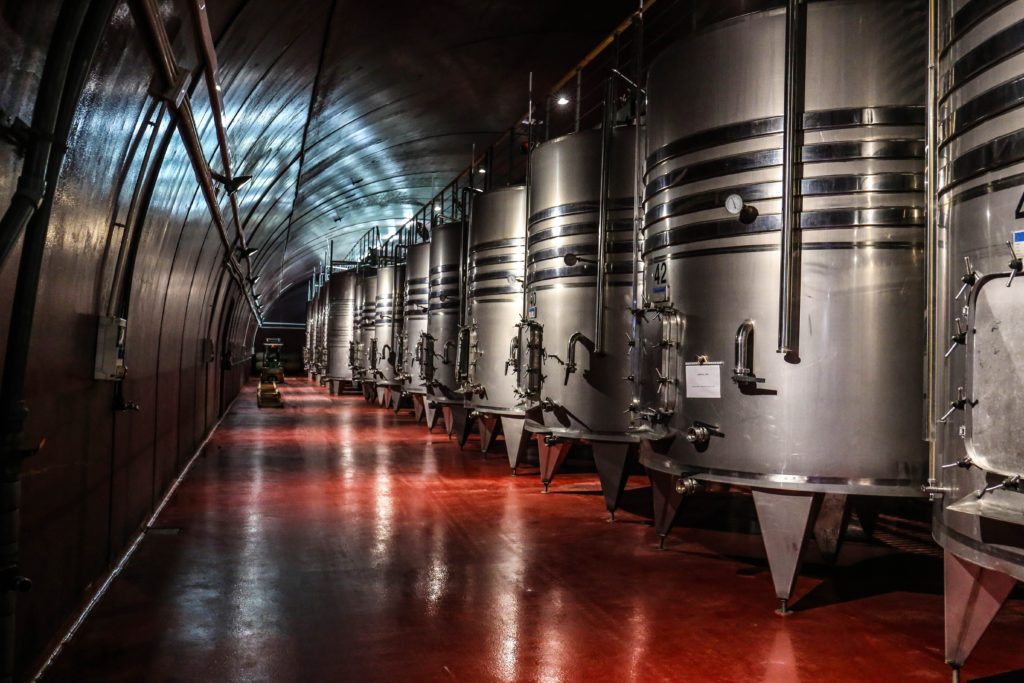Fine-tuning wine fermentation processes

Fermentation is a form of anaerobic respiration occurring in certain microorganisms, like yeasts. Many processes arising in diverse contexts can be classified as fermentation processes, such as manufacturing of some food products (baking, wine and beer industries are based on them) and of some industrial and pharmaceutical chemicals.
Alcoholic fermentation comprises a series of biochemical reactions by which pyruvate (the end product of glycolysis, the broken down of glucose) is converted to ethanol and carbon dioxide. However, ethanol itself is lethal for the yeasts that produce it, and fermentation alone cannot produce ethanol solutions containing more than 15% ethanol by volume. Hence, the upper limit for the alcoholic content of wines.
Predictive modelling is the key factor for saving time and resources with respect to manufacturing processes. But to model an alcoholic fermentation with accuracy is not what we could call trivial. For a start, the model for red wine and white wine must be different, because the initial conditions are different.
In order to produce red wine, once the must – a mixture of grapes, skins, juice and seeds – is in a fermentation vessel, yeast naturally present on the skins of the grapes, or artificially added, will sooner or later start the alcoholic fermentation. But, in the case of white wine, the grapes are pressed and only the juice (wort) is extracted and put into tanks for fermentation by yeast present on the grapes.
In the literature, many models based on ordinary differential equations exist to model the process of wine fermentation, some including heat transfer and convective mixing but mostly focused on red wine fermentation. Importantly, some argue that the biological component of the process, namely the open-loop dynamics of yeast seem to be highly dependent on the initial cell mass distribution. This can be modelled via population balance models describing the single-cell behaviour of the yeast cell. There have already been published several models that include population balance for wine fermentation. But, how big is this effect?
Now, a team of researchers introduces 1 for white wine a new model which is much more detailed than the ones studied previously. This model can answer that question.
This new model for the white wine fermentation process is based on a combination of already known components. It takes the form of a system of highly nonlinear weakly hyperbolic partial/ordinary integro-differential equations. As could be expected, this model becomes very challenging from a theoretical and numerical point of view.
For this reason, on the theoretical part, the authors study first the existence and uniqueness of solutions to a simplified version based on semigroup theory. For its numerical solution, they derive a numerical methodology based on a finite volume scheme combined with a time implicit scheme. Numerical results confirm there is some impact of the initial cell mass distribution on the solution.
How big is this some? Is it worth the effort of using a much computationally expensive model? The detailed model is compared to a simpler model based on ordinary differential equations. The observed differences for different initial distributions and the different models turn out to be smaller than expected, almost negligible, actually.
Still, the new model is very interesting from a mathematical point of view. The outcomes of this work can be useful for other models based on integro-differential equations from other fields of application in finance, engineering sciences including physical and other biological processes. Of course, the outcomes for the particular wine fermentation model studied can be very useful for winemakers and process engineers for fine-tuning optimization.
Author: César Tomé López is a science writer and the editor of Mapping Ignorance
Disclaimer: Parts of this article might have been copied verbatim or almost verbatim from the referenced papers.
References
- Christina Schenk and Volker H. Schulz (2022) Existence, Uniqueness, and Numerical Modeling of Wine Fermentation Based on Integro-Differential Equations SIAM Journal on Applied Mathematics doi: 10.1137/20M1362309 ↩